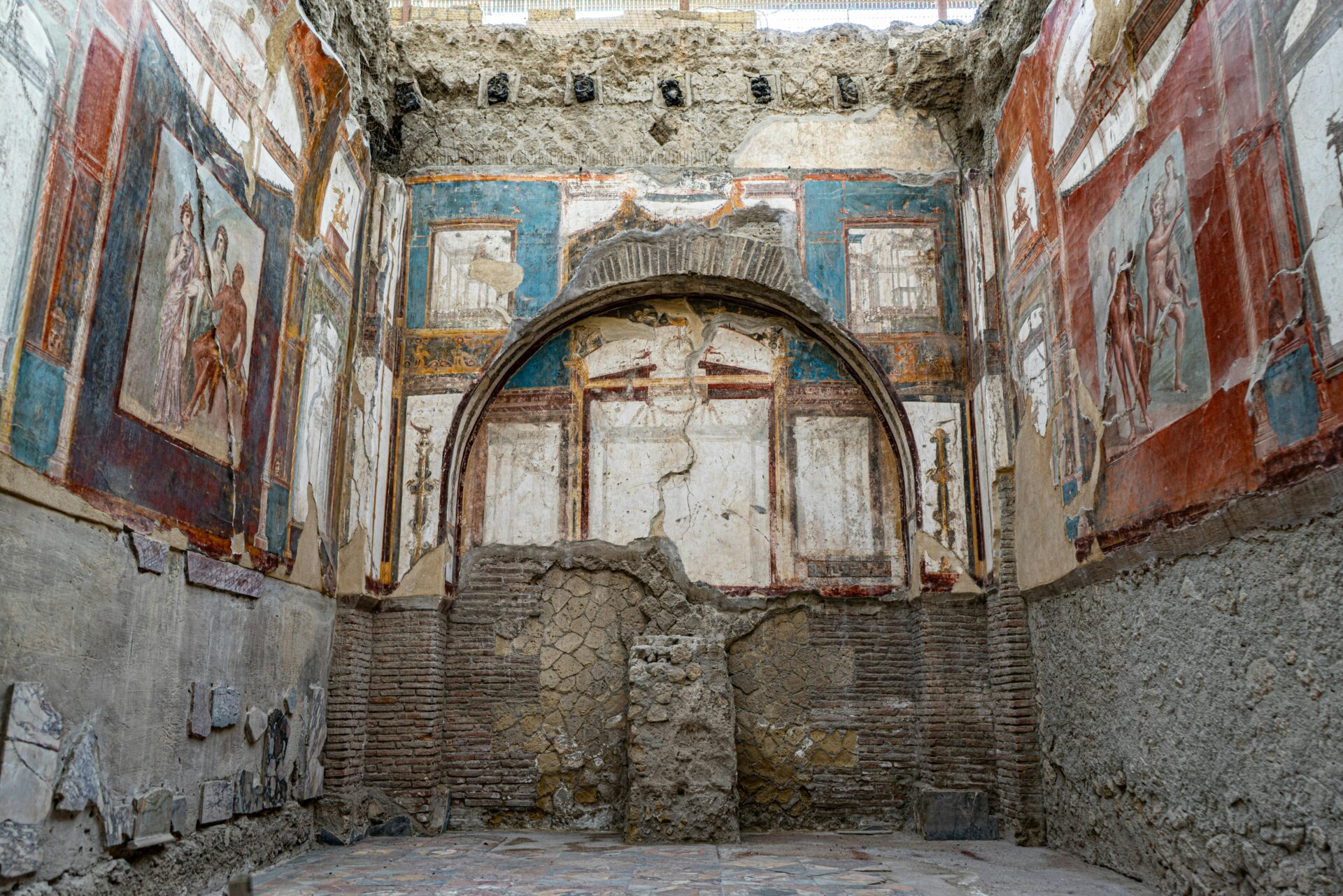When I first visited the Bay of Naples, I expected Pompeii to be the highlight of my archaeological adventures. Instead, Herculaneum stole the show.
Herculaneum gives a surprisingly intimate and better-preserved glimpse into ancient Roman life than its famous neighbor Pompeii, even though it sits closer to Mount Vesuvius. Here, I found upper levels of buildings still standing—something Pompeii lost to the first shower of pumice.
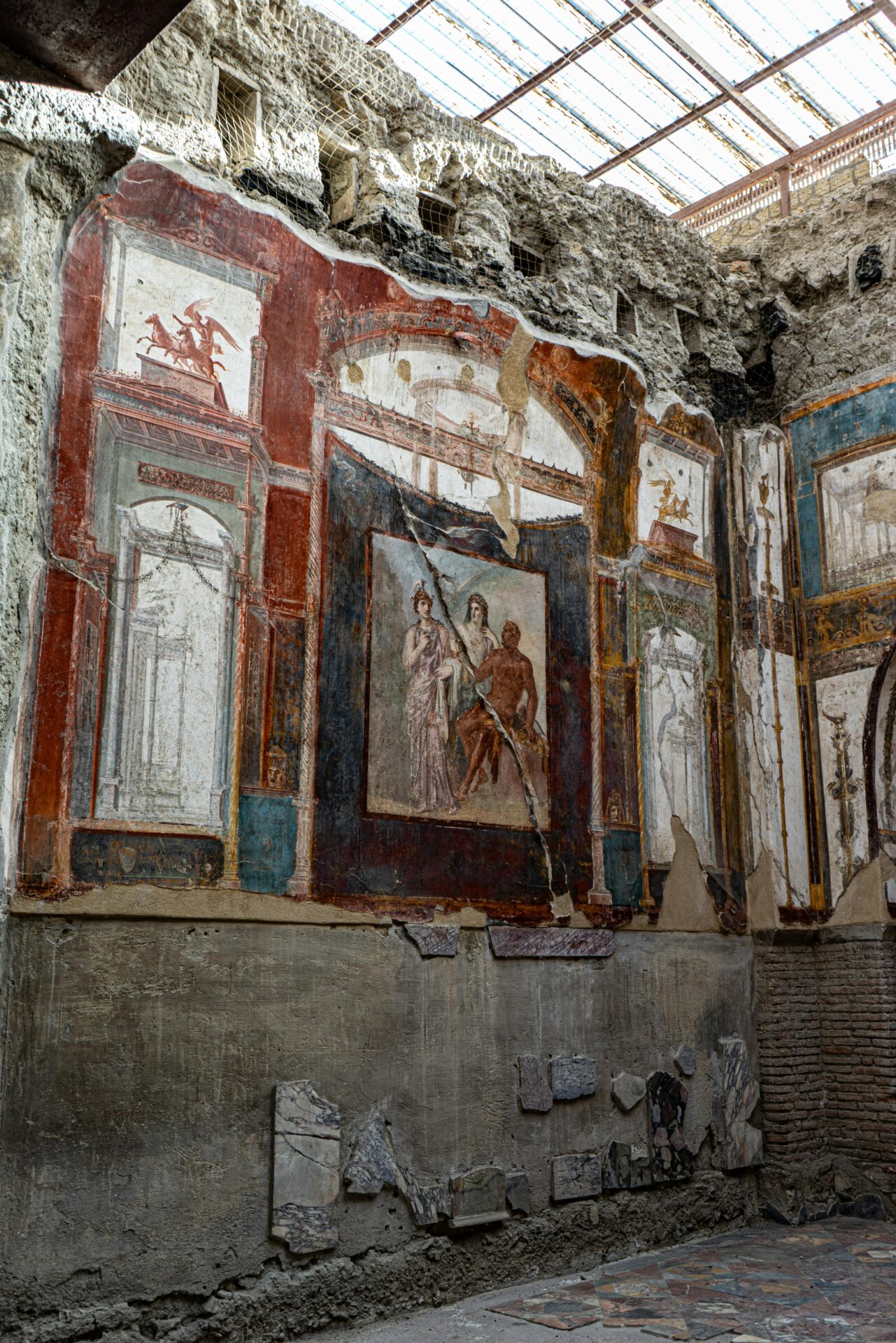
Walking through Herculaneum almost feels like time travel. The site is smaller, so the experience feels immersive and, honestly, way less crowded than Pompeii’s streets.
During my summer visit, I really appreciated Herculaneum’s manageable size. The heat can be brutal, but you can see so much here without feeling overwhelmed.
Vesuvius looms even larger above Herculaneum. That view is striking—a constant reminder of the volcano’s power.
What really makes Herculaneum special is how close you feel to daily Roman life. Carbonized wooden furniture, preserved food, and mosaics tell a deeper story than what you usually get at Pompeii.
As I wandered homes with their second stories still intact, I kept imagining the people who once lived there. You just don’t get that at Pompeii.
Herculaneum vs. Pompeii: What Sets Them Apart
Both sites open windows into ancient Roman life, but Herculaneum and Pompeii each tell their own stories. The differences go well beyond just size.
The Scale and Style of Preserved Ruins
You’ll notice Herculaneum’s ruins are better preserved than Pompeii’s. When I walk those compact streets, the wooden elements, furniture, and even food items always catch my eye.
Mount Vesuvius affected each site in its own way. Herculaneum got buried under about 60 feet of volcanic material, which sealed everything in.
Pompeii sprawls over 170 acres, while Herculaneum covers just 12. But Herculaneum more than makes up for its size with the sheer quality of what survived.
The buildings here show off more opulence. I’ve seen elaborate mosaics and frescoes still clinging to the walls. Multi-story buildings remain, while Pompeii mostly has single-story ruins.
Different Stories of Mount Vesuvius’ Destruction
The eruption’s impact wasn’t the same for both cities. Pompeii mostly got buried by falling ash and pumice, freezing the city in a single moment.
In Pompeii, archaeologists created those famous plaster casts by filling hollow spaces in the ash where bodies once lay. The result is haunting.
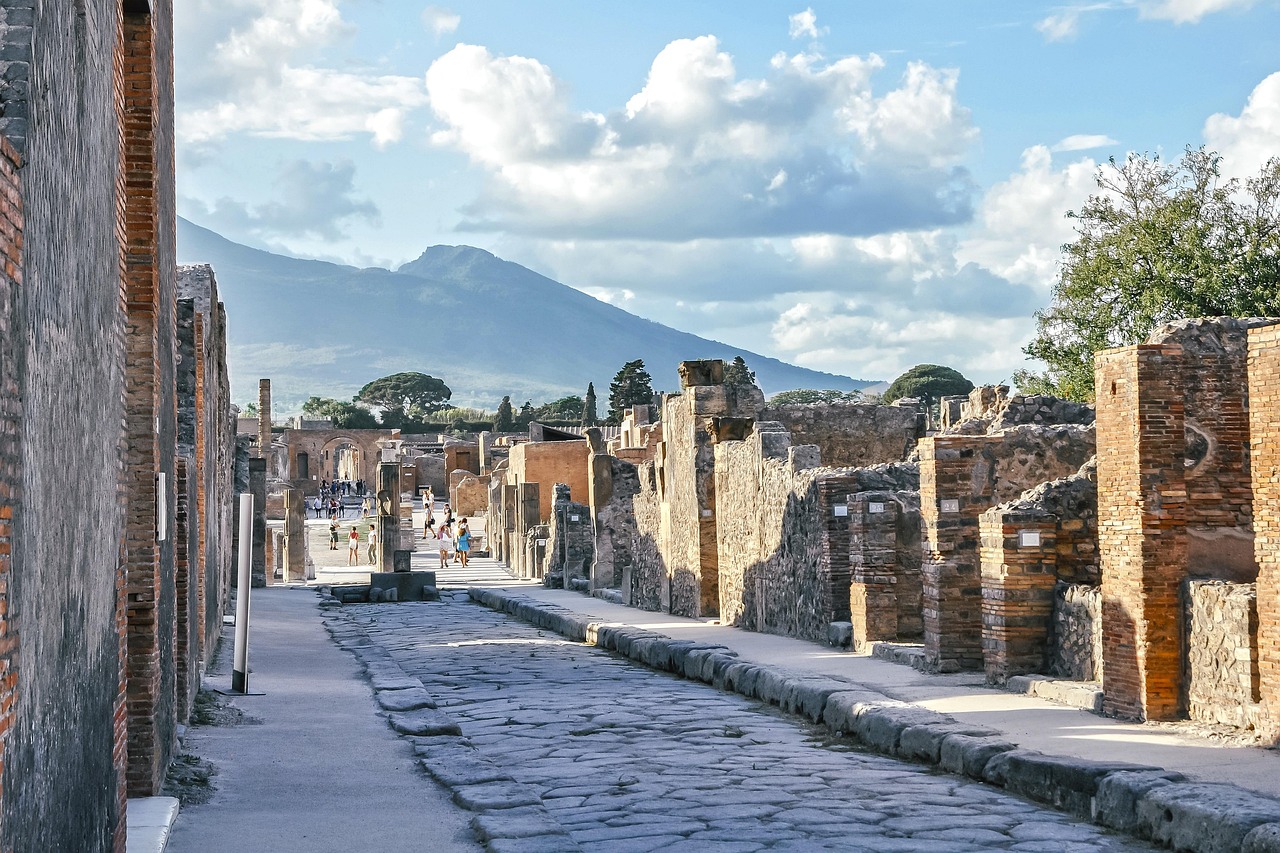
Herculaneum tells a different story. The pyroclastic flows—super-heated waves of gas and volcanic debris—slammed into this coastal town with terrifying force.
For a long time, archaeologists thought everyone had escaped Herculaneum. But in the 1980s, they uncovered over 300 skeletons along the ancient shoreline. Many died trying to flee by sea.
These remains give us direct biological evidence, not just plaster impressions.
Crowds, Access, and Intimate Exploration
I’ve visited both sites, and the difference in crowds is wild. Pompeii often gets swamped—sometimes over 15,000 visitors a day. It’s tough to find a quiet moment.
Herculaneum, on the other hand, draws only about a fifth as many people. That peaceful vibe lets me linger in ancient homes without feeling rushed.

Image Source: Wikimedia Commons
Because Herculaneum is compact, I can see the whole site in two or three hours. Pompeii? You’ll need a full day, minimum.
Herculaneum also feels more visitor-friendly. Elevated walkways give you great views of the city below. Many buildings are open, so you can really get up close with daily Roman life.
Immersing Yourself in Herculaneum’s Ancient Streets
Walking through Herculaneum is like slipping back into a real Roman neighborhood. Its small scale and incredible preservation make the past feel personal.
Herculaneum: Wandering Through Original Villas and Homes
When I stroll these streets, I’m always amazed by how whole everything feels. Unlike Pompeii, you’ll see buildings with their second stories still standing.
The House of Neptune blew me away with its stunning mosaics. The blues are so vibrant, the patterns so intricate—it almost looks new.
The wooden elements here are something else. I’ve spotted original doors, beds, and shelves, all carbonized but still recognizable. You don’t see that every day in archaeology.
The homes of the Roman elite really stand out. Many villas have beautiful atriums and colorful frescoes that still pop with color. These weren’t just houses—they were statements of taste and wealth.
Shopfronts, Fountains, and Daily Roman Life
The commercial side of Herculaneum fascinates me. I love checking out the thermopoliums—ancient snack bars—with their clay pots still set into marble counters.
Public fountains mark the street corners, and many still have detailed carvings. One near the main square (decumanus maximus) features a sea god sculpture that seems to keep watch over the city even now.
Here, daily life feels real. You can see bakeries with ovens, textile shops with loom spaces, and food stores with storage jars. The remarkable preservation in Ercolano makes it easy to picture Romans shopping and chatting on these same streets.
Unveiling Herculaneum’s Artistic Treasures
Herculaneum’s state of preservation means we get to enjoy some of the best ancient Roman art around. The volcanic mud that buried the city actually protected its treasures better than the ash did at Pompeii.
Dazzling Frescoes and Mosaics
Every time I visit, the colors knock me out. Reds, blues, yellows—they’re still bold after nearly 2,000 years. Unlike Pompeii, where the colors often faded, Herculaneum’s art looks surprisingly fresh.
Some of the best frescoes are in the House of the Deer. Mythological scenes leap off the walls, with details like facial expressions and the folds in clothing still visible.
The mosaics underfoot are just as impressive. Floors are covered in geometric patterns and scenes from daily life. Some homes even have black and white designs that play optical tricks depending on where you’re standing.
House of Neptune and Amphitrite
This house really shines. The Neptune and Amphitrite mosaic is the crown jewel, in my opinion. The sea god and his wife appear in vivid color and detail.
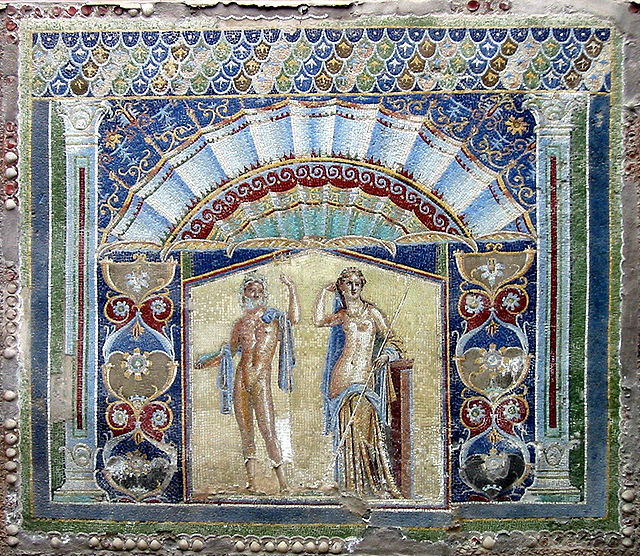
Image Source: Wikimedia Commons
This mosaic covers an entire wall—a rare choice for the time. The blues and greens make you feel like you’re underwater with Neptune. I notice something new every time I visit.
The house itself is in great shape, with several rooms still showing off decorative touches. The garden courtyard is a peaceful spot to soak in the artistry.
Villa of the Papyri: A Hidden Gem
Most of this huge villa is still buried, but what’s been found is jaw-dropping. Named for the carbonized scrolls discovered inside, it probably belonged to Julius Caesar’s father-in-law.
The villa produced an amazing collection of bronze and marble statues, now displayed in Naples’ Archaeological Museum. Some of these statues are among the finest Roman art ever found.
The story of the papyrus scrolls really intrigues me. Technology is finally letting scholars read these burnt scrolls without destroying them. Around 1,800 have been recovered, but experts think thousands more are still hidden under the volcanic rock.
The villa’s size and luxury suggest it was a hub for culture and learning. Its gardens once reached the ancient shoreline.
Experiencing Sites Beyond Herculaneum and Pompeii
Exploring the Vesuvian area, I stumbled onto other ancient Roman sites that don’t get nearly as much attention. These places offer their own unique views of Roman life—plus, you’ll barely see another tourist.
Oplontis and Villas of the Roman Elite
Oplontis surprised me. It’s just a quick trip from Pompeii in today’s Torre Annunziata. The star attraction is Villa Poppaea, which probably belonged to Emperor Nero’s second wife.
This seaside villa is pure luxury. The frescoes are so well-preserved, I had to remind myself they’re ancient. The trompe l’oeil paintings create illusions of depth and columns that trick the eye.
Unlike at Pompeii, I often wandered rooms at Oplontis alone. The gardens, massive pool, and fancy living spaces really show how the rich Romans lived.
Stabia, Stabiae, and Thermal Baths
Ancient Stabiae (modern Castellammare di Stabia) feels like a hidden secret. This resort town sits on a ridge with beautiful views of the Bay of Naples.
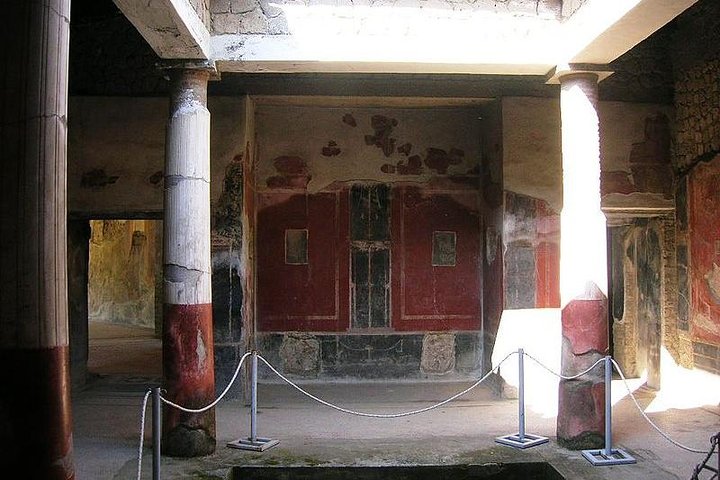
Image Source: Tripadvisor
I explored Villa San Marco and Villa Arianna, two partially excavated luxury homes with breathtaking sea views. The thermal baths at these villas show off the Romans’ knack for comfort and engineering.
The frescoes at Villa Arianna are stunning, especially the famous “Flying Figures” that seem to float on the walls. The private bath complexes reveal how elites relaxed with hot and cold pools.
Stabiae gets hardly any visitors compared to Pompeii. I loved the quiet—perfect for connecting with history without a crowd.
Planning Your Visit: Practical Travel Insights
Visiting Herculaneum takes a little planning, but it’s totally worth it. Timing, transport, and combining sites can make your trip smoother and a lot more fun.
Choosing Herculaneum or Pompeii for Your Itinerary
If you want an intimate experience with fewer crowds, go for Herculaneum. The site is much smaller (4.5 hectares versus Pompeii’s 66) and you can see it in two or three hours—perfect for a half-day trip.

Pompeii is much bigger and takes at least four to six hours. If you’re short on time, Herculaneum is the easy choice. The walkways are also flatter and easier to handle.
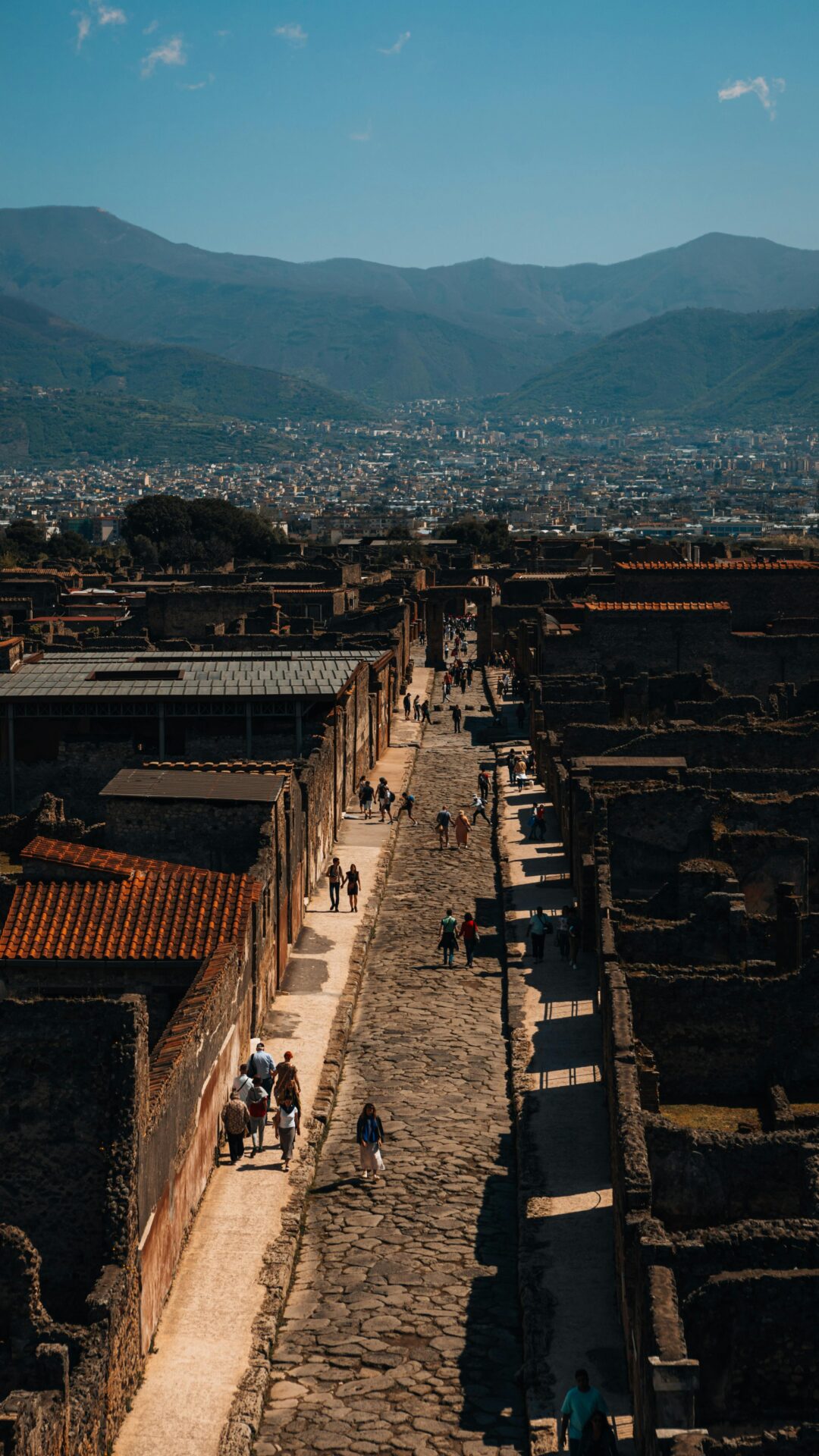
For history buffs with more time, I suggest seeing both on different days. Personally, I like starting with Herculaneum—it sets a high bar for preservation, so you’ll appreciate Pompeii’s scale even more.
The Ercolano train station is just a 10-minute walk from Herculaneum. You can get there from Naples in about 20 minutes or from Sorrento in 40, using the Circumvesuviana line.
Guided Tours, Private Tours, and Local Experts
I’ve tried going solo and with guides. Honestly, a good guide makes a huge difference. Local experts bring the ancient city to life with stories and details you’d never pick up on your own.
Private tours usually cost €80-150. You get personal attention and can go at your own pace. My best experience was with a guide who focused on archaeology—worth every euro.
Group tours are cheaper (€40-60) and still offer great info. Some tours bundle Herculaneum with Pompeii or Mount Vesuvius for a full day.
Tour Booking Tips:
- Book three or four days ahead during peak season (May–September)
- Look for guides with an archaeology background
- Audio guides (€8) are a solid budget option
- Tours with transportation from Naples or Sorrento save you some hassle
Exploring Naples, Sorrento, and the Amalfi Coast
I based myself in Naples to explore Campania’s ancient sites. The city gives you direct access to Herculaneum and has the National Archaeological Museum, where many artifacts from both sites are on display.
Sorrento is more scenic and connects easily to the Amalfi Coast. From Sorrento, I took day trips to Herculaneum (40 minutes by train) and later visited Positano and Amalfi.
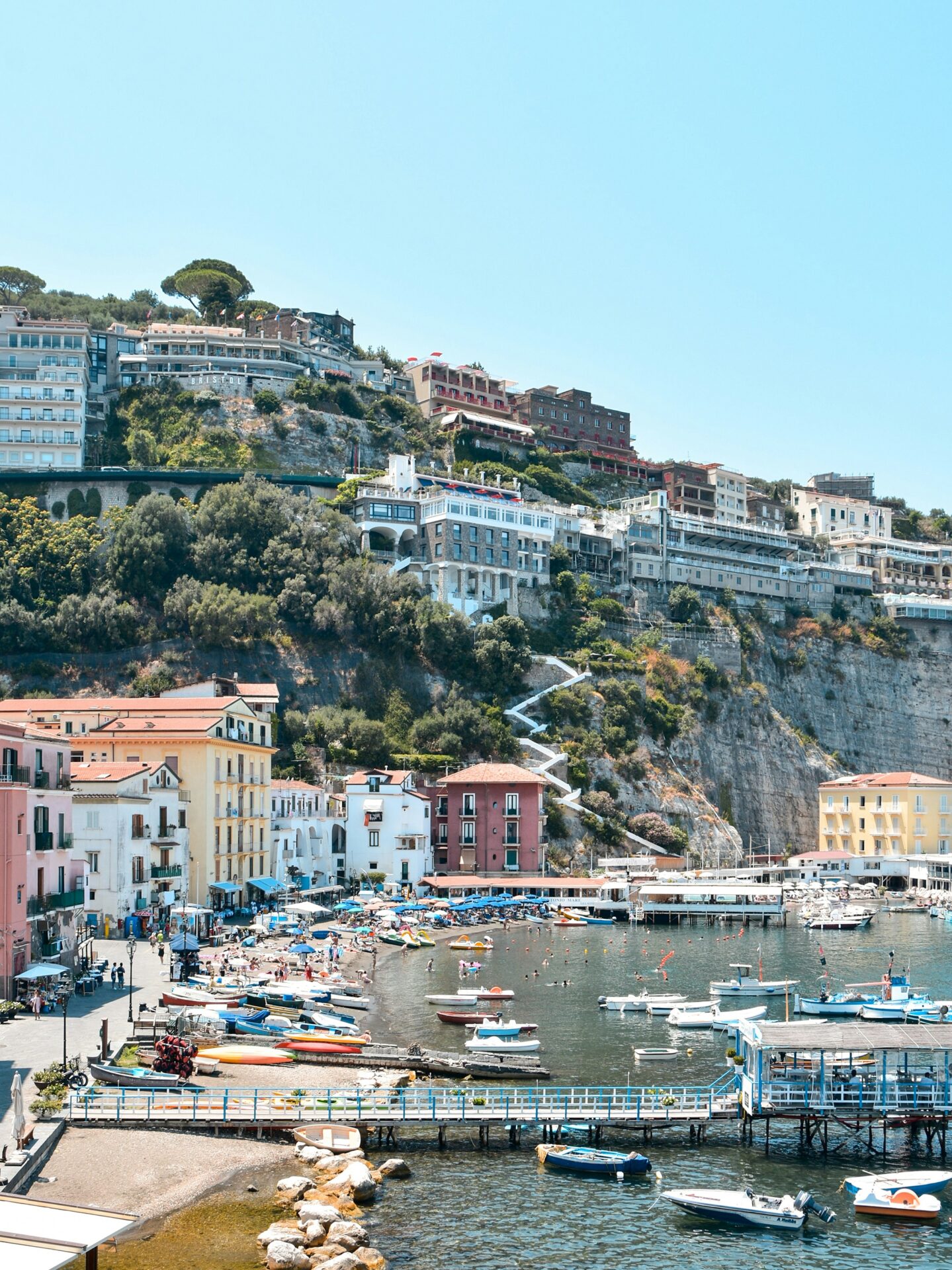
For a well-rounded Campania trip, here’s what I’d do:
- 1 day at Herculaneum
- 1–2 days exploring Naples
- 1 day at Paestum (Greek temples)
- 2–3 days along the Amalfi Coast
The Bay of Naples region really does offer an amazing mix of experiences. After soaking up ancient history, relaxing in coastal towns like Positano is a perfect way to balance your trip.

